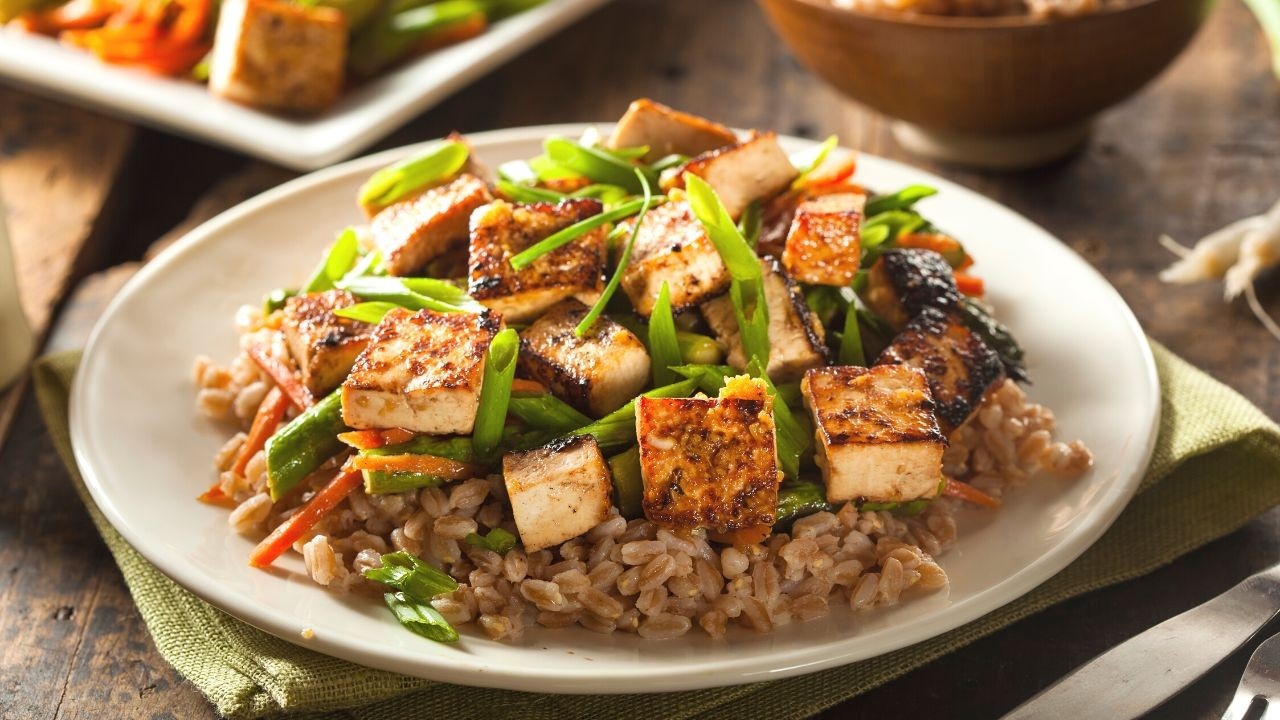The Best Way to Stir-Fry and Why It’s Not Just for Vegetables
Oct 30, 2022
Have you ever been curious about stir-fries and wondered if you could do it at home? Yes, you can! Stir-frying is not only a fast, flavorful and useful cooking technique to know, it can also be a more healthful alternative, compared to other cooking methods like boiling or deep frying. In this article, we’ll look at the key differences between stir-frying and sautéing, the best practices to adopt when stir-frying and the variety of ingredients you can use in stir-fries to make them more nutrient-packed, filling and satisfying!
Stir-Frying Versus Sautéing – What’s the Difference?
In a recent article Plant-Based Cooking: Top 5 Myths About Stir-Fries Debunked, we discussed the key benefits of stir-frying, and looked at the truth about common myths surrounding stir-fries. Research shows that stir-frying as a technique can be effective in retaining the content of health-boosting phytochemicals such as glucosinolates in brassica vegetables. Pesticide residue content on vegetables is also lowered through the stir-frying process.
For some readers, you might be wondering at this point, “I’m already sautéing my food, so how’s that different from stir-frying?” Here’s the answer! In sautéing, you are usually cooking large or small pieces of food in a heated wide, shallow pan or skillet using a small amount of hot fat. Typically, you would just turn over the cooked food once or twice during the cooking process. On the other hand, stir-frying is a cooking method that first originated in Asia, but is now more commonly used around the world. It has traditionally been used more for cooking vegetables. What’s unique is that during the stir-frying process, the heat can be higher and the stirring action is faster and more frequent. Food is also usually cut into smaller or thinner pieces for faster cooking. These are just a few of the major differences between stir-frying and sautéing.
The Best Way to Stir-Fry
So, what’s the best way to stir-fry? It should be noted that some studies over the past two decades have associated the practices of ‘Chinese-style cooking’ using woks, high temperature oils and cooking in enclosed spaces with an increased incidence of lung cancer and possibly cervical cancer. This link comes from the cooking oil fumes released in the cooking process when oils are heated to a high temperature.
However, the kind of stir-frying I’m talking about is vastly different. The cooking technique I use and recommend is using very little to no oil and stir-frying for a short period of time, without the need to use excessively hot temperatures. Often, I find a low-medium or medium heat is more than enough for stir-frying. Of course, you can also cook in a well-ventilated area to further reduce any health risks, but since only a very small amount of oil (or no oil) is used compared to conventional methods, the health hazards of inhaling cooking oil fumes should not be much of an issue.
What You Can Stir-Fry

Now that you have the best practices for stir-frying under your belt, let’s turn to the next issue: how do you make them more nourishing and filling?
Herein is the problem. Often, when we think of stir-fries, images of vegetables tend to pop into our heads. But stir-frying actually works well as a cooking technique not just for vegetables but also for a host of other plant-based ingredients! Shown here are just a few protein-rich and nutrient-dense tasty additions you can add to your stir-fry dish:
- Black turtle beans
- Yellow or black soy beans
- Kidney beans
- White navy beans
- Chickpeas (also known as garbanzo beans)
- Firm or extra-firm tofu
- Tempeh
- Green lentils
- Brown lentils
- Mung bean sprouts
- Peas
- Seitan strips
- Soy curls
- Edamame
- Fava beans
- Pinto beans
The possibilities are really endless! In addition to using one of these suggestions above, you can also choose to create noodle or rice-based mixed dishes using the stir-fried cooking technique. But if you choose to do so, aim to use an intact whole grain like cooked brown rice, quinoa or a higher fiber legume-based pasta or whole wheat pasta. So, there are really lots of ways to create satisfying and filling complete plant-based meals using this technique, and a variety of whole plant-based ingredients you can use!
As you can see, how filling a stir-fry is depends on what you put into the dish. You can make various colorful and filling mixed stir-fried dishes using the ingredients listed above. Add one of these protein-rich plant-based options to your dish and pair it with a cooked intact whole grain like millet, brown rice, buckwheat, wild rice or quinoa for a full, satisfying meal.
Sources:
1. Zhong L, Goldberg MS, Parent ME, Hanley JA. Risk of developing lung cancer in relation to exposure to fumes from Chinese-style cooking. Scand J Work Environ Health. 1999 Aug;25(4):309-16.
2. Lee CH, Yang SF, Peng CY, Li RN, Chen YC, Chan TF, Tsai EM, Kuo FC, Huang JJ, Tsai HT, Hung YH, Huang HL, Tsai S, Wu MT. The precancerous effect of emitted cooking oil fumes on precursor lesions of cervical cancer. Int J Cancer. 2010 Aug 15;127(4):932-41.



